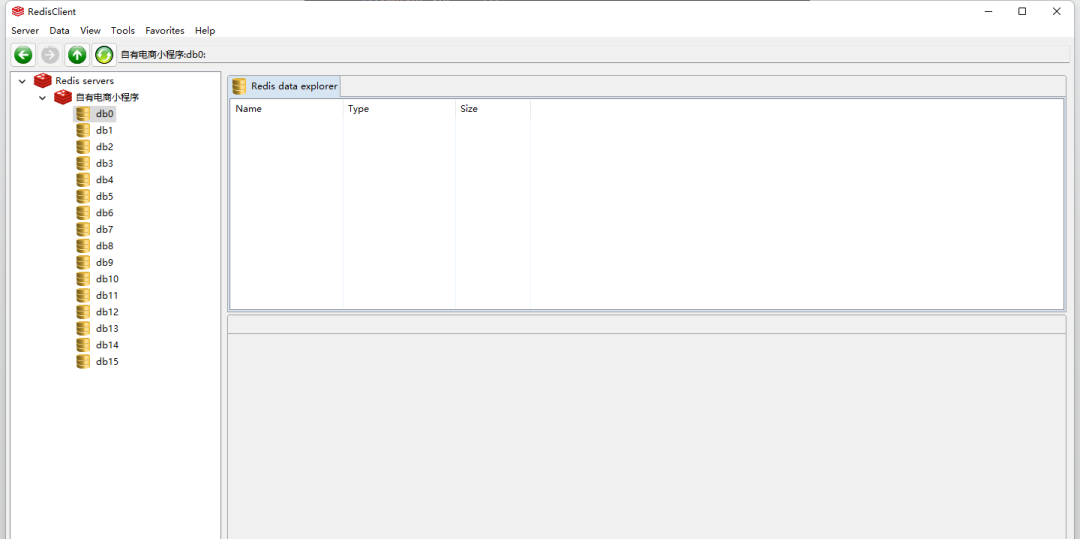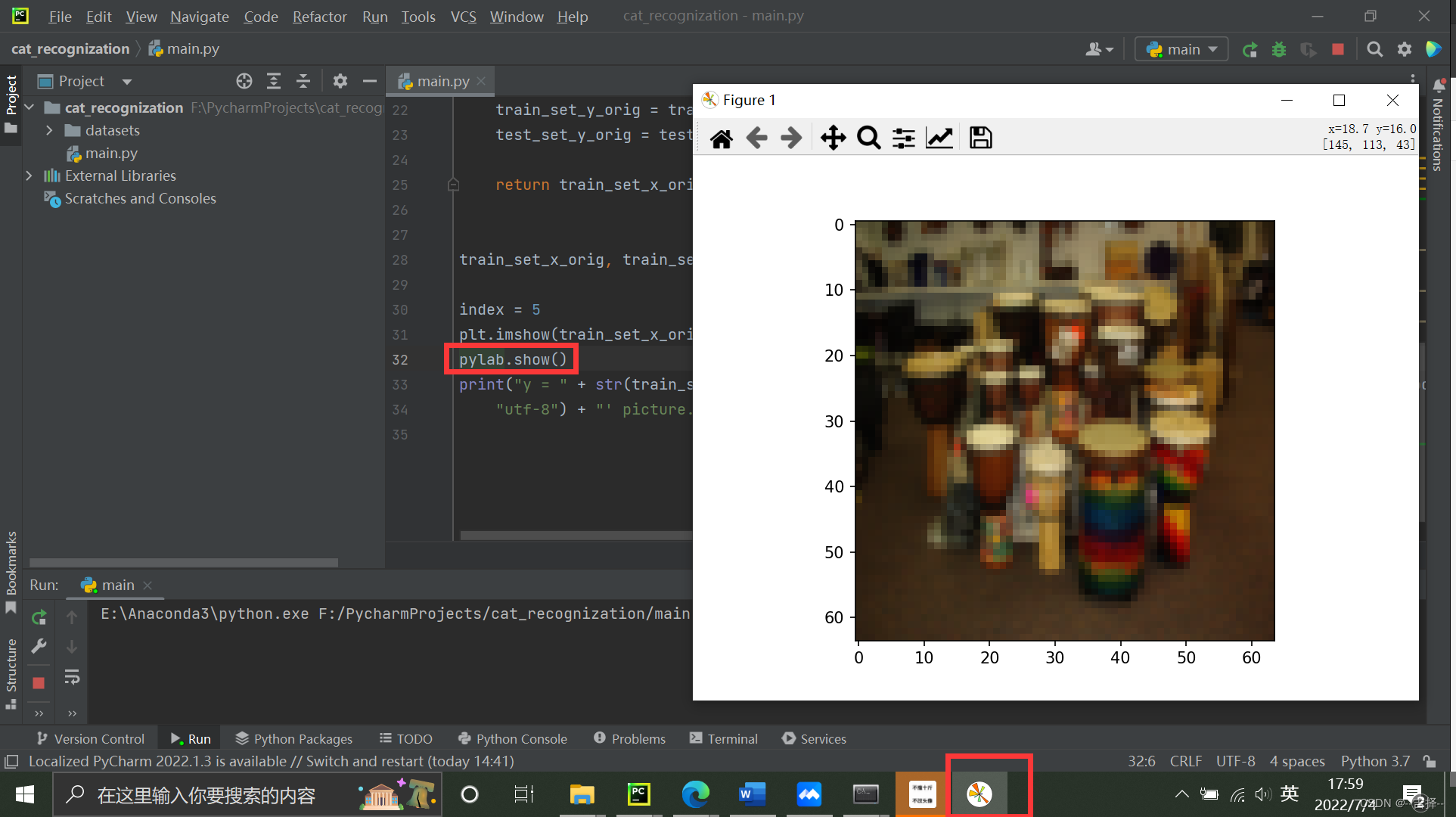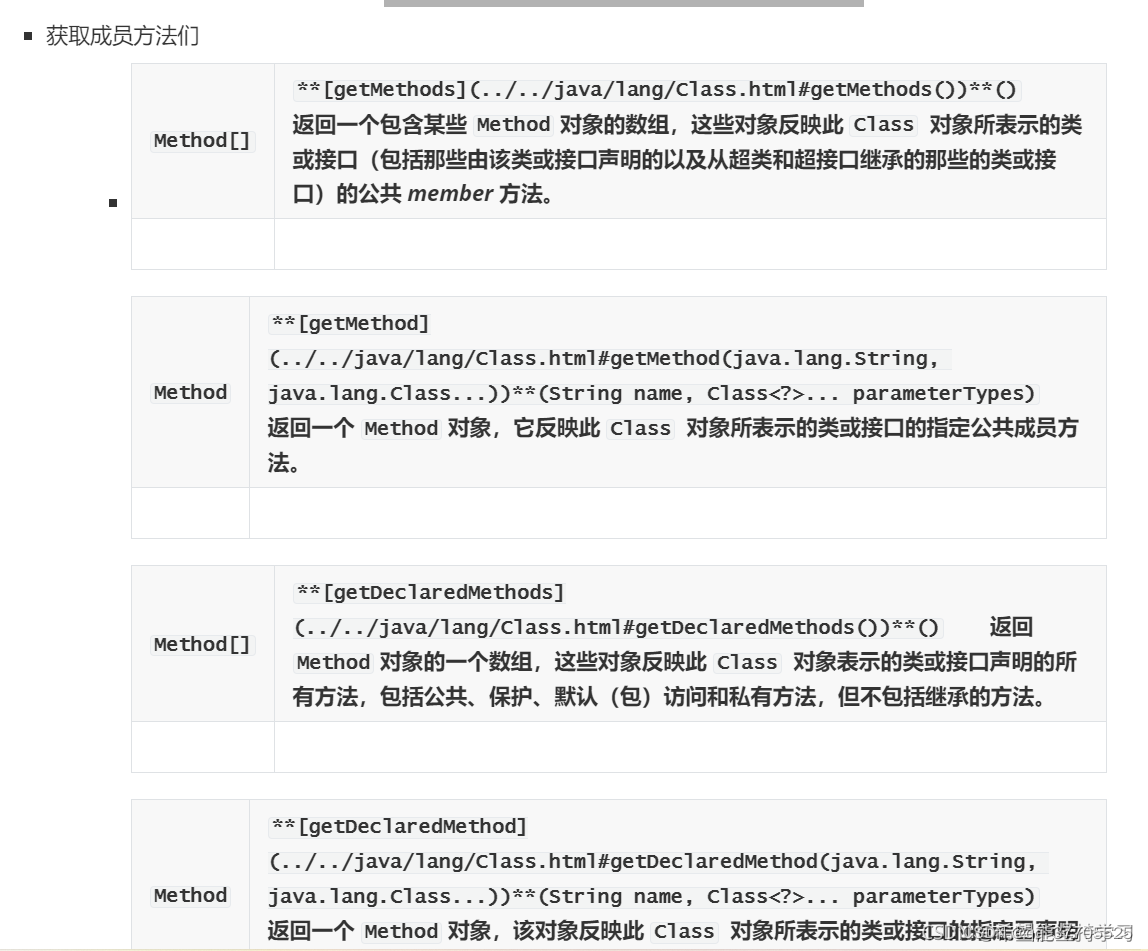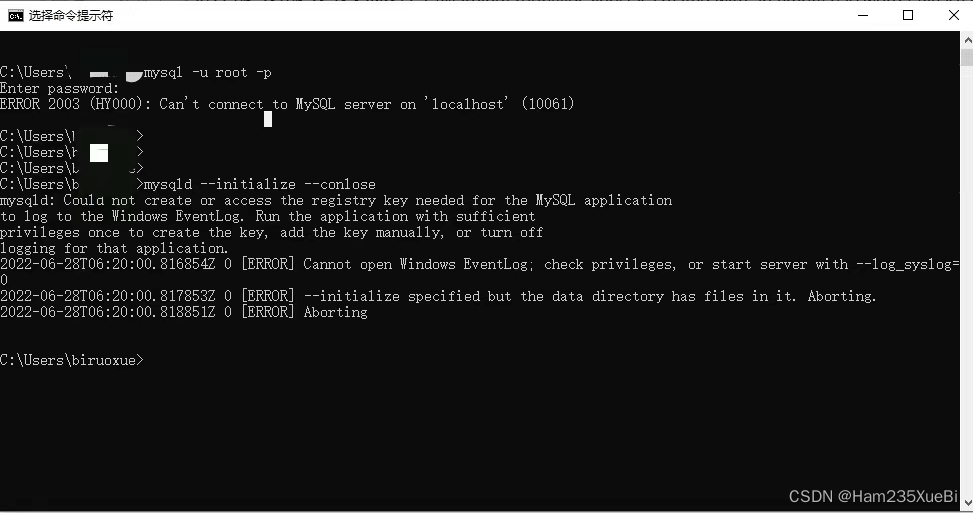当前位置:网站首页>MySQL information schema learning (I) -- general table
MySQL information schema learning (I) -- general table
2022-07-06 19:30:00 【Night hunter - Demon King】
Sometimes there are certain needs , For example, you need to view the fields of specific conditions in the statistical database , Before, I would analyze statistics one by one , Actually information schema It provides very powerful functions , You can study it .
Reference material , Official document :
MySQL :: MySQL 5.7 Reference Manual :: 24 INFORMATION_SCHEMA Tableshttps://dev.mysql.com/doc/refman/5.7/en/information-schema.htmlinformation schema There's something in it , Look at the documentation :
INFORMATION_SCHEMA Provide access to the database Metadata 、 of MySQL Server information ( For example, the name of a database or table 、 The data type or access rights of the column ) The interview of .information The table inside is the view , No data files :INFORMATION_SCHEMA Is each MySQL A database in the instance , This location stores information about MySQL Information about all other databases maintained by the server . The INFORMATION_SCHEMA The database contains several read-only tables . They're actually views , Instead of the base table , So there are no files associated with them , And you can't set triggers on them . Besides , There is no database directory with that name .
Take a general look at schema What are the tables below :

It can be seen that the main reason is database metadata permissions , Variables and a large part INNODB Storage engine related tables .
Mainly learn about commonly used tables
1. TABLES
| TABLES | Table information |

tables Table mainly describes the metadata of database tables , You can get some information about the table , For example, the number of rows , Take up space, etc .
The main fields are as follows :
TABLE_CATALOGThe name of the directory to which the table belongs . The value is alwaysdef.TABLE_SCHEMAThe schema to which the table belongs ( database ) The name of .TABLE_NAMEThe name of the table .TABLE_TYPEBASE TABLE/SYSTEM VIEWENGINETable storage engine . For partitioned tables ,ENGINEDisplays the name of the storage engine used by all partitions .VERSION.frmTable file Version number of .ROW_FORMATRow storage format (Fixed,Dynamic,Compressed,Redundant,Compact).TABLE_ROWSRow number . Some storage engines , for exampleMyISAM, Store the exact count . For other storage engines , for exampleInnoDB, This value is an approximation , It may be different from the actual value 40% To 50%. under these circumstances , Please useSELECT COUNT(*)To get an accurate count .AVG_ROW_LENGTHThe average President .DATA_LENGTHaboutMyISAM,DATA_LENGTHIs the length of the data file , In bytes .about
InnoDB,DATA_LENGTHIs the approximate amount of space allocated for the clustered index , In bytes . say concretely , It is the size of the clustered index ( In pages ) multiplyInnoDBPage size .Information about other storage engines , Please refer to the notes at the end of this section .
MAX_DATA_LENGTHaboutMyISAM,MAX_DATA_LENGTHIs the maximum length of the data file . Given the size of the data pointer used , This is the total number of bytes of data that can be stored in the table .INDEX_LENGTHaboutMyISAM,INDEX_LENGTHIs the length of the index file , In bytes .about
InnoDB,INDEX_LENGTHIs the approximate amount of space allocated for nonclustered indexes , In bytes . say concretely , It is the sum of the nonclustered index sizes ( In pages ) multiplyInnoDBPage sizeAUTO_INCREMENTnextAUTO_INCREMENTvalueCREATE_TIMEWhen the table was createdTABLE_COMMENTComments used when creating tables
according to data_length+index_length You can roughly count the space occupied by the table .
For example, calculate the space size of all tables
SELECT TABLE_NAME, sum(DATA_LENGTH + INDEX_LENGTH) / 1024 / 1024 / 1024 as size FROM information_schema.`TABLES` GROUP BY TABLE_NAME ORDER BY size desc;2.COLUMNS
| COLUMNS | Columns in each table |
Provide information about the columns in the table . Has the following columns :
TABLE_CATALOGThe name of the directory to which the table containing this column belongs . The value is alwaysdef.TABLE_SCHEMAThe schema of the table containing this column ( database ) The name of .TABLE_NAMEThe name of the table containing the column .COLUMN_NAMEColumn name .ORDINAL_POSITIONThe position of the column in the table .COLUMN_DEFAULTDefault value of column . This is aNULLIf the column has an explicit defaultNULL, Or the column definition does not containDEFAULTClause .IS_NULLABLEColumn nullability . The value isYESwhetherNULLYou can store values in columns ,NOIf not .DATA_TYPEColumn data type .CHARACTER_MAXIMUM_LENGTHFor character string Columns , The maximum length in characters .CHARACTER_OCTET_LENGTHFor character string Columns , Maximum length ( In bytes ).NUMERIC_PRECISIONFor numeric Columns , Numerical accuracy .NUMERIC_SCALEFor columns of numbers , Digital scale .DATETIME_PRECISIONFor the time column , Decimal second precision .CHARACTER_SET_NAMEFor character string Columns , Character set name .COLLATION_NAMEFor character string Columns , Collation name .COLUMN_TYPECOLUMN_TYPEThe value contains the type name and possible additional information , Such as precision or length .COLUMN_KEYWhether the column is indexed :If
COLUMN_KEYIt's empty , Then the column is either not indexed , Or just as multiple columns 、 Auxiliary columns in non unique indexes are indexed .If
COLUMN_KEYyesPRI, Then the column isPRIMARY KEYor Is one of many columnsPRIMARY KEY.If
COLUMN_KEYyesUNI, Then the column isUNIQUEThe first column of the index .(UNIQUEMultiple indexes are allowedNULLvalue , But you canNULLclear throughNullColumn to determine whether the column allows .)If
COLUMN_KEYyesMUL, Then this column is the first column of the non unique index , The given value is allowed to appear more than once in this column .
PRIVILEGESYour permissions on this column .COLUMN_COMMENTAny comments contained in the column definition .
adopt columns Tables can be generated in batches DDL Statement etc. . For example, the string field length of all tables under the database 40 Expand to 60 Then you can query column_type=varchar(40) What are the column , And then batch generate ddl sql.
3.PARTITIONS
| PARTITIONS | Table partition information |
Data stored in the partition table , The main field :
PARTITION_NAMEThe name of the partition .PARTITION_METHODvalueRANGE,LIST,HASH,LINEAR HASH,KEY, orLINEAR KEY;TABLE_ROWSNumber of table rows in partition . You can roughly count the number of rows in the partitioned table
4.PROCESSLIST
| PROCESSLIST | Information about the current execution thread |
show processlist; You can view the active connections of the current database , Threads, etc , It is often used to check the current running state of the database .
MySQL The process list indicates the operations currently performed by the thread set executing in the server .
Core column :
IDConnection identifier . have access to KILL Statement kills the thread .USERIssuing statements MySQL user .HOSTThe hostname of the client that issued the statementDBThread's default database , perhapsNULLIf there is no choice .COMMANDThe thread represents the type of command executed by the client , perhapsSleepWhether the session is idle .TIMEThe time that the thread is in the current state ( In seconds ).STATEAn action that indicates what the thread is doing 、 An event or state . Most states correspond to very fast operations . If a thread stays in a given state for a few seconds , There may be problems that need to be investigated .INFOThe statement that the thread is executing , perhapsNULLIf it does not execute any statements . If this statement executes other statements , Then the statement may be a statement sent to the server , Or the innermost statement . for example , IfCALLStatement execution is executing SELECT Statement stored procedure , ThenINFOThe value shows this SELECT sentence .
Don't say anything , Each of these fields is often used , Here's to learn command and STATE state ,
COMMAND The values are mainly as follows :
Threads can have any of the following Command value :
Binlog DumpThis is a thread on the replication source , Used to send binary log contents to the copy .Create DBThe thread is executing the create database operation .DaemonThe thread is inside the server , Instead of a thread that serves client connections .FetchThe thread is getting results from executing the prepared statement .Field ListThis thread is retrieving information about table columns .Long DataThe thread retrieves long data in the result of executing the prepared statement .ProcesslistThis thread is generating information about the server thread .RefreshThe thread is refreshing the table 、 Log or cache , Or reset state variables or copy server information .Register SlaveThis thread is registering the replica server .Set optionThe thread is setting or resetting the client statement execution options .SleepThe thread is waiting for the client to send it a new statement .StatisticsThe thread is generating server status information .
STATE The main states are as follows :
After createWhen the thread creates the table at the end of the function that creates the table ( Include internal temporary tables ) when , That's what happens . Even if the table cannot be created due to some errors , This state will also be used .altering tableThe server is performing in place ALTER TABLE.- checking permissions The thread is checking whether the server has the permissions required to execute the statement .
Checking tableThe thread is performing a table check operation .cleaning upThe thread has processed a command and is ready to free memory and reset some state variables .closing tablesThe thread is flushing the changed table data to disk and closing the used table . This should be a quick operation . without , Please make sure that you do not have a complete disk and that the disk is not used very much .converting HEAP to ondiskThe thread is removing the internal temporary table fromMEMORYConvert table to disk table .copy to tmp tableThe thread is processing a ALTER TABLE sentence . This state occurs after creating a table with a new structure, but before copying rows into it . For threads in this state , have access to Performance Schema To get the progress of the replication operation .Copying to group tableIf the statement has differentORDER BYOfGROUP BYConditions , Then the rows will be sorted by group and copied to the temporary table .Copying to tmp tableThe server is copying to a temporary table in memory .Copying to tmp table on diskThe server is copying to a temporary table on disk . The temporary result set becomes too large . therefore , The thread changes the temporary table from memory to disk based format to save memory .Creating indexThread is processingALTER TABLE ... ENABLE KEYSOneMyISAMsurface .Creating sort indexThread is processing SELECT Resolved using internal temporary tables a.creating tableThis thread is creating a table . This includes creating temporary tables .Creating tmp tableThe thread is creating a temporary table in memory or on disk . If the table is created in memory , But later converted to disk table , Then the status during this operation isCopying to tmp table on disk.committing alter table to storage engineThe server has completed in place ALTER TABLE And is submitting the results .deleting from main tableThe server is performing the first part of multi table deletion . It only removes from the first table , And save for use from other ( Reference resources ) Columns and offsets deleted in the table .deleting from reference tablesThe server is performing the second part of multi table deletion , And delete matching rows from other tables .discard_or_import_tablespaceThread is processingALTER TABLE ... DISCARD TABLESPACEorALTER TABLE ... IMPORT TABLESPACEsentence .endThis happens at the end , But cleaning up ALTER TABLE, CREATE VIEW, DELETE, INSERT, SELECT, or UPDATE The statement before . aboutendstate , The following actions may occur :Delete the query cache entry after changing the data in the table
Write events to the binary log
Free the memory buffer , Include blob
Execution of init_commandThread is executinginit_commandStatements in system variable values .freeing itemsThe thread has executed the command . Some of the item releases completed during this state involve the query cache . This state is usually followed bycleaning up.FULLTEXT initializationThe server is preparing to perform a natural language full-text search .initThis happened in ALTER TABLE, DELETE, INSERT, SELECT, or UPDATE Before the initialization of the statement . The actions taken by the server in this state include refreshing the binary log 、InnoDBLogs and some query cache cleanup operations .Killedsomeone KILL Sent a statement to the thread , It should be checked next time kill Flag to abort . stay MySQL This flag is checked in each main cycle of , But in some cases , The thread may still take a short time to end . If a thread is locked by another thread , Then terminate immediately after other threads release their locks .logging slow queryThe thread is writing a statement to the slow query log .loginThe initial state of the connection thread , Until the client is successfully authenticated .manage keysThe server is enabling or disabling table indexing .Opening tablesThe thread is trying to open a table . This should be a very fast process , Unless something prevents it from opening . for example , One ALTER TABLEor LOCK TABLE Statement can prevent opening the table , Until the statement is completed . Check your table_open_cache Whether the value is large enough is also worth it .optimizingThe server is performing initial optimization for the query .Purging old relay logsThis thread is deleting unneeded relay log files .query endThis state occurs after processing the query but atfreeing itemsBefore status .Receiving from clientThe server is reading packets from the client . This stateReading from netstay MySQL 5.7.8 Called before .Removing duplicatesUse of query SELECT DISTINCT In such a way that MySQL Different operations cannot be optimized at an early stage . therefore ,MySQL An additional stage is needed to remove all duplicate rows , Then send the results to the client .SELECT The thread is processing statements Deleting internal temporary tables . If you do not create a temporary table , This state is not used .
rename result tableThe thread is processing a ALTER TABLE sentence , A new table has been created , And is renaming it to replace the original table .Reopen tablesThe thread obtained the lock of the table , But after obtaining the lock, notice that the underlying table structure has changed . It releases the lock , Table closed , And try to reopen it .preparing for alter tableThe server is preparing to perform in place ALTER TABLE.Saving stateaboutMyISAMRepair or analyze table operations , The thread is saving the new table state to.MYIThe file header . The status includes the number of rows 、AUTO_INCREMENTInformation such as counters and key distribution .Searching rows for updateThe thread is executing the first stage to find all matching rows before updating them . If UPDATE Changing the index used to find related rows , You have to do this .Sending dataThis thread is reading and processing SELECT Line of statement , And send the data to the client . Because the operations that occur during this state tend to perform a lot of disk access ( Read ), Therefore, it is usually the longest running state in a given query lifecycle .Sending to clientThe server is writing packets to the client . This stateWriting to netstay MySQL 5.7.8 Called before .setupThe thread is starting a ALTER TABLE operation .Sorting for groupThe thread is performing sorting to satisfy aGROUP BY.Sorting for orderThe thread is performing sorting to meetORDER BY.Sorting index MyISAMThis thread is sorting index pages , In order to optimize the operation in the table Make more effective visits during .Sorting resultabout SELECT sentence , This is similar toCreating sort index, But for non temporary tables .statisticsThe server is calculating statistics to make a query execution plan . If a thread is in this state for a long time , The server may be doing other work on disk binding .System lockThread calledmysql_lock_tables()And the thread status has not been updated since . This is a very common state , May occur for a variety of reasons . for example , The thread is about to request or waiting for the internal or external system lock of the table . stay InnoDB perform LOCK TABLES. If this state is caused by an external lock request , And you don't use multiple to access the same table mysqld The server , You can use the Options MyISAM Disable external system lock .--skip-external-locking however , External locking is disabled by default , Therefore, this option is likely to have no effect . about SHOW PROFILE, This state means that the thread is requesting a lock ( Don't wait for it ).updateThe thread is preparing to start updating the table .UpdatingThe thread is searching for rows to update and updating them .updating main tableThe server is performing the first part of a multi table update . It only updates the first table , And save for updating other ( Reference resources ) Table columns and offsets .updating reference tablesThe server is performing the second part of the multi table update , And update the matching rows from other tables .User lockThe thread is about to request or is waiting to call the requested Advisory lock GET_LOCK(). about SHOW PROFILE, This state means that the thread is requesting a lock ( Don't wait for it ).User sleepThe thread called a SLEEP() call .FLUSH TABLES WITH READ LOCK Waiting for lock submission .
FLUSH TABLES WITH READ LOCK Waiting for global read lock or read_only Setting global system variables .
Waiting for tablesThe thread receives a notification that the infrastructure of the table has changed , It needs to reopen the table to get the new structure . however , To reopen the table , It must wait until all other threads have closed the table in question .Waiting for table flushThread is executing FLUSH TABLES And waiting for all threads to close their tables , Or the thread receives a notification that the underlying structure of the table has changed , It needs to reopen the table to get the new structure . however , To reopen the table , It must wait until all other threads have closed the table in question .Waiting forThe server is waiting to lock the subsystem from metadata obtain Lock or lock , amonglock_typelock THR_LOCKlock_typeIndicates the type of lock .This status indicates waiting a
THR_LOCK:Waiting for table level lock
These states indicate waiting for metadata lock :
Waiting for event metadata lockWaiting for global read lockWaiting for schema metadata lockWaiting for stored function metadata lockWaiting for stored procedure metadata lockWaiting for table metadata lockWaiting for trigger metadata lock
You can get that the current thread state is waiting for a lock , Especially execution DDL when , Need to pay attention to , It is easy to cause the link not to be released because the metadata lock cannot be obtained , Database crash .
Waiting on condThe thread is waiting for the condition to become a true general state . No specific status information is available .Writing to netThe server is writing packets to the network . from MySQL 5.7.8 Start , This state is calledSending to client.
边栏推荐
- 【翻译】数字内幕。KubeCon + CloudNativeCon在2022年欧洲的选择过程
- Mysql Information Schema 学习(一)--通用表
- LeetCode-1279. 红绿灯路口
- 时钟轮在 RPC 中的应用
- 学习探索-使用伪元素清除浮动元素造成的高度坍塌
- 快速幂模板求逆元,逆元的作用以及例题【第20届上海大学程序设计联赛夏季赛】排列计数
- PMP practice once a day | don't get lost in the exam -7.6
- 面试突击63:MySQL 中如何去重?
- Elastic search indexes are often deleted [closed] - elastic search indexes gets deleted frequently [closed]
- R language ggplot2 visualization: use ggviolin function of ggpubr package to visualize violin diagram
猜你喜欢

Meilu biological IPO was terminated: the annual revenue was 385million, and Chen Lin was the actual controller

The second day of rhcsa study

PMP每日一练 | 考试不迷路-7.6

思维导图+源代码+笔记+项目,字节跳动+京东+360+网易面试题整理
![[translation] a GPU approach to particle physics](/img/07/57036c925155cab36678c696e89440.jpg)
[translation] a GPU approach to particle physics

Php+redis realizes the function of canceling orders over time

Pychrm Community Edition calls matplotlib pyplot. Solution of imshow() function image not popping up

史上超级详细,想找工作的你还不看这份资料就晚了

Reflection and illegalaccessexception exception during application

An error occurs when installing MySQL: could not create or access the registry key needed for the
随机推荐
Zero foundation entry polardb-x: build a highly available system and link the big data screen
A full set of teaching materials, real questions of Android interview of 7 major manufacturers including Alibaba Kwai pinduoduo
Mind map + source code + Notes + project, ByteDance + JD +360+ Netease interview question sorting
Tensorflow and torch code verify whether CUDA is successfully installed
凤凰架构3——事务处理
LeetCode-1279. Traffic light intersection
Mysql Information Schema 學習(一)--通用錶
USB host driver - UVC swap
C # - realize serialization with Marshall class
R language ggplot2 visual time series histogram: visual time series histogram through two-color gradient color matching color theme
LeetCode-1279. 红绿灯路口
map的使用(列表的数据赋值到表单,json逗号隔开显示赋值)
受益匪浅,安卓面试问题
JDBC details
Solution of intelligent management platform for suppliers in hardware and electromechanical industry: optimize supply chain management and drive enterprise performance growth
The dplyr package of R language performs data grouping aggregation statistical transformations and calculates the grouping mean of dataframe data
GCC [7] - compilation checks the declaration of functions, and link checks the definition bugs of functions
如何自定义动漫头像?这6个免费精品在线卡通头像生成器,看一眼就怦然心动!
【翻译】Linkerd在欧洲和北美的采用率超过了Istio,2021年增长118%。
【pytorch】yolov5 训练自己的数据集